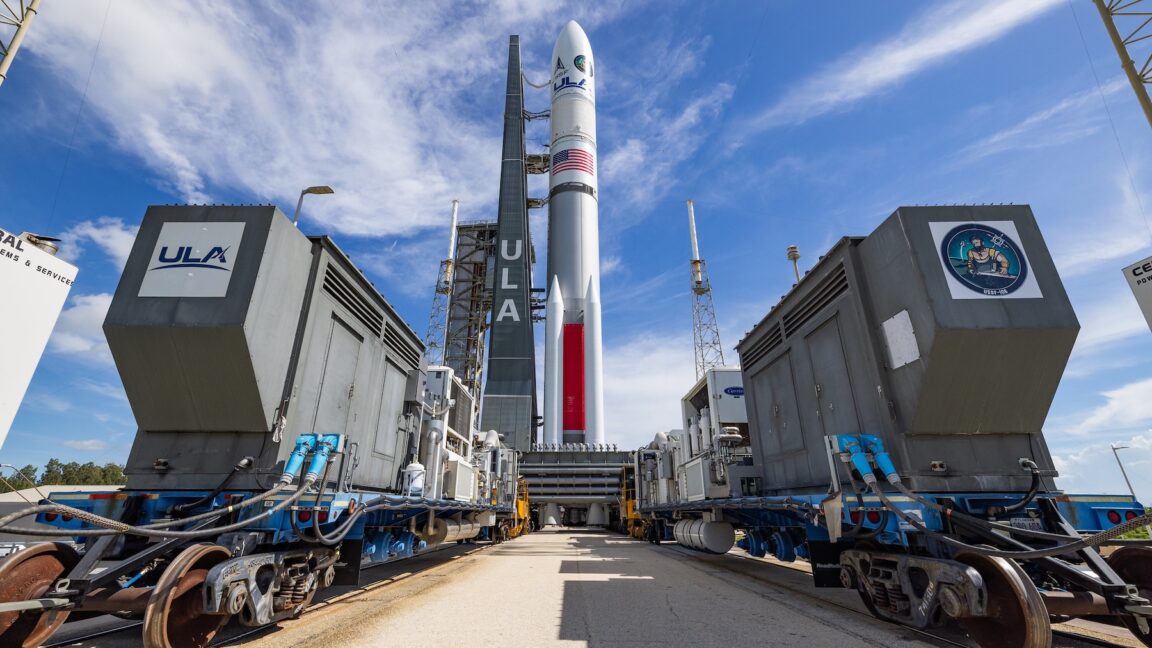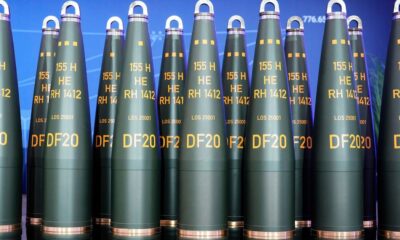Science
US Space Force Readies Vulcan Rocket Launch for National Security

The US Space Force is set to launch the Vulcan rocket from Cape Canaveral Space Force Station in Florida at 19:59 EDT (23:59 UTC) on Tuesday. This launch marks a significant milestone after over a decade of development, as the Vulcan will transport a military navigation satellite along with other undisclosed payloads into geosynchronous orbit, approximately 22,000 miles (nearly 36,000 kilometers) above the equator.
The Vulcan rocket, developed by United Launch Alliance (ULA), is designed to enhance national security capabilities, and this mission, designated USSF-106, is particularly noteworthy. There is an 80 percent chance of favorable weather during the one-hour launch window.
Technical Developments and Enhancements
This launch follows two successful demonstration flights in 2024, which validated the rocket’s performance. The Vulcan’s capacity has been notably enhanced for this mission, utilizing four larger solid rocket boosters from Northrop Grumman. They replace the two strap-on boosters used in earlier flights, significantly increasing the rocket’s power. Gary Wentz, ULA’s Vice President of Government and Commercial Programs, expressed enthusiasm, stating, “This will be the most powerful Vulcan yet.”
The previous test flights encountered challenges, including a nozzle failure on the second flight that delayed operational readiness. The ULA investigation revealed a manufacturing defect in a carbon composite insulator, which compromised the nozzle’s integrity but did not prevent the rocket from reaching its intended orbit.
The Space Force officially certified the Vulcan rocket for national security launches in March 2023, paving the way for this significant mission. The Vulcan aims to provide a heavy-lift launch capability at a lower cost while maintaining independence from foreign technologies, a critical consideration given current geopolitical tensions.
Payloads and Strategic Importance
While officials have confirmed that the primary payload is the Navigation Technology Satellite-3 (NTS-3), details about additional payloads remain classified. The NTS-3 mission will focus on testing innovative technologies aimed at enhancing satellite navigation, especially against potential jamming and spoofing threats. Joanna Hinks, a senior aerospace engineer at the Air Force Research Laboratory, highlighted the importance of this mission, stating, “We anticipate conducting over 100 different experiments.”
The satellite weighs less than 3,000 pounds (about 1,250 kilograms) and will explore advanced navigation signals to improve robustness against interference. The significance of this mission extends beyond technical achievements; it symbolizes the Space Force’s commitment to maintaining assured access to space through multiple independent launch providers.
The Vulcan rocket’s launch is pivotal for national security as it reduces reliance on foreign-made rocket engines, particularly as the Atlas V, which it replaces, utilized Russian-built engines. This shift aligns with US strategic goals to ensure that national defense assets are launched with domestically produced technology.
Col. Jim Horne, mission director for the USSF-106 launch, remarked on the historical significance, stating, “We officially end our reliance on Russian-made main engines with this launch.”
The ongoing competition between ULA and SpaceX highlights the evolving landscape of military space operations. While ULA remains a key player with its Vulcan rocket, SpaceX has emerged as the leading provider for the Pentagon’s launch requirements, capturing nearly half of the competition from 2020 to 2024.
As the launch approaches, the Space Force’s decision to keep many details confidential reflects a strategic shift in handling sensitive information. This contrasts with previous missions where payloads were more openly discussed. Observers anticipate that some information may be released post-launch as the Vulcan’s payloads are cataloged.
With the countdown to launch underway, both military officials and industry leaders are poised to witness a new chapter in US space operations, underscoring the importance of innovation and security in an increasingly complex global environment.
-

 Politics4 weeks ago
Politics4 weeks agoSecwepemc First Nation Seeks Aboriginal Title Over Kamloops Area
-

 World5 months ago
World5 months agoScientists Unearth Ancient Antarctic Ice to Unlock Climate Secrets
-

 Entertainment5 months ago
Entertainment5 months agoTrump and McCormick to Announce $70 Billion Energy Investments
-

 Science5 months ago
Science5 months agoFour Astronauts Return to Earth After International Space Station Mission
-

 Lifestyle5 months ago
Lifestyle5 months agoTransLink Launches Food Truck Program to Boost Revenue in Vancouver
-

 Technology3 months ago
Technology3 months agoApple Notes Enhances Functionality with Markdown Support in macOS 26
-

 Lifestyle3 months ago
Lifestyle3 months agoManitoba’s Burger Champion Shines Again Amid Dining Innovations
-

 Top Stories2 months ago
Top Stories2 months agoUrgent Update: Fatal Crash on Highway 99 Claims Life of Pitt Meadows Man
-

 Politics4 months ago
Politics4 months agoUkrainian Tennis Star Elina Svitolina Faces Death Threats Online
-

 Sports5 months ago
Sports5 months agoSearch Underway for Missing Hunter Amid Hokkaido Bear Emergency
-

 Politics5 months ago
Politics5 months agoCarney Engages First Nations Leaders at Development Law Summit
-

 Technology5 months ago
Technology5 months agoFrosthaven Launches Early Access on July 31, 2025





















